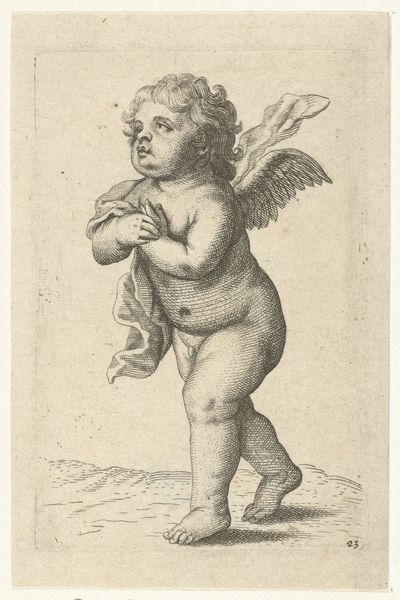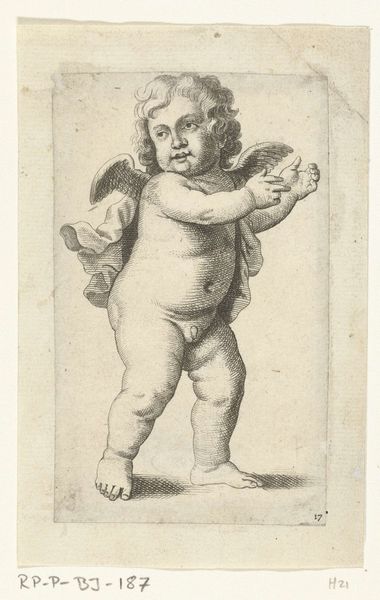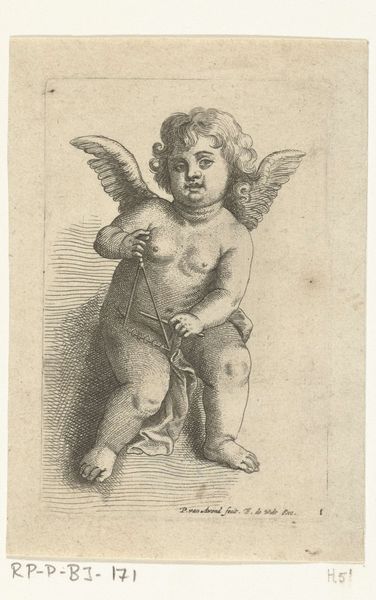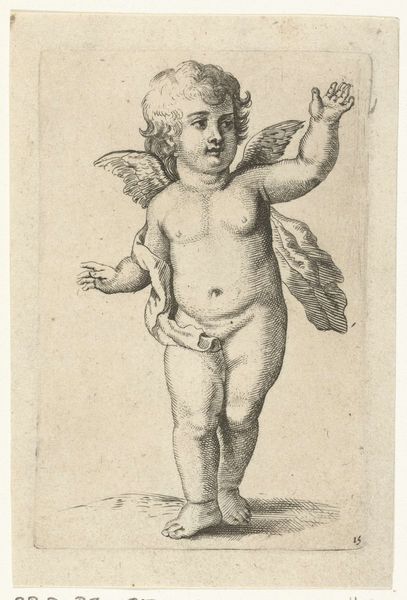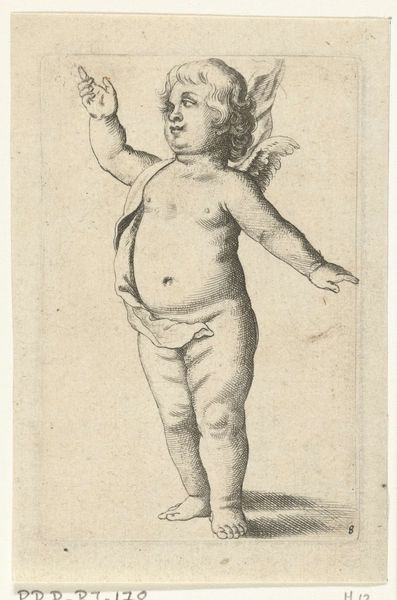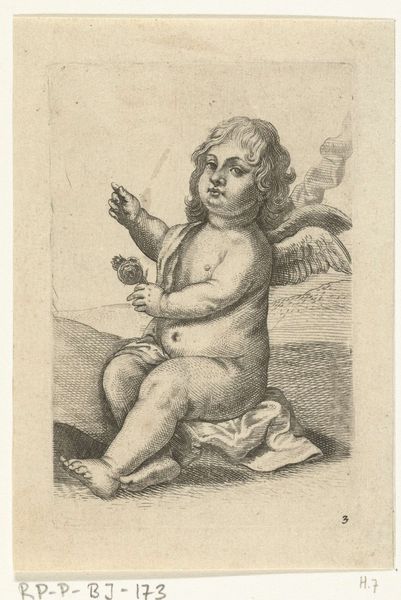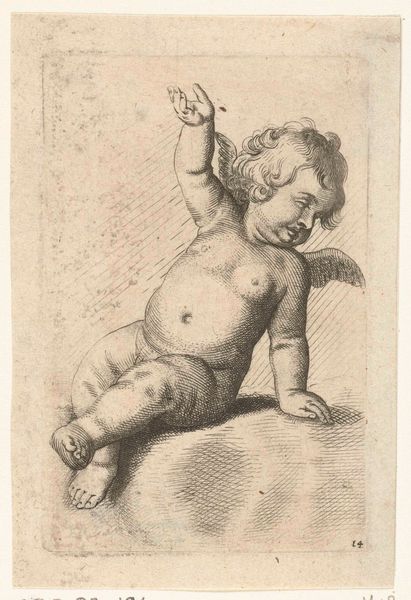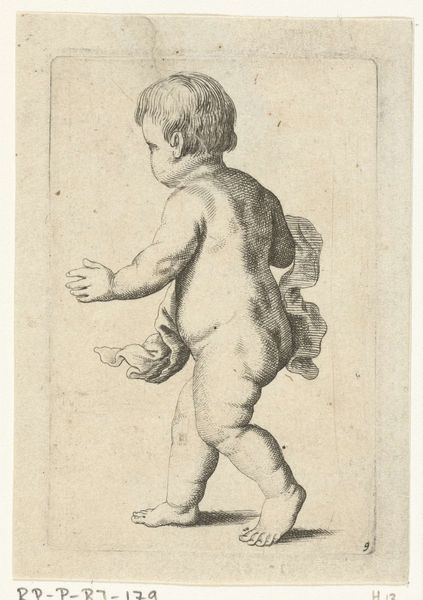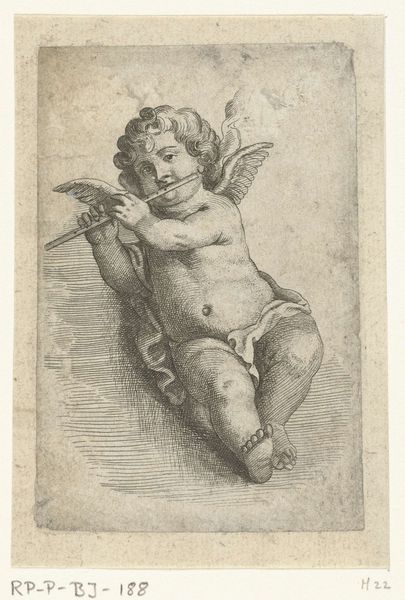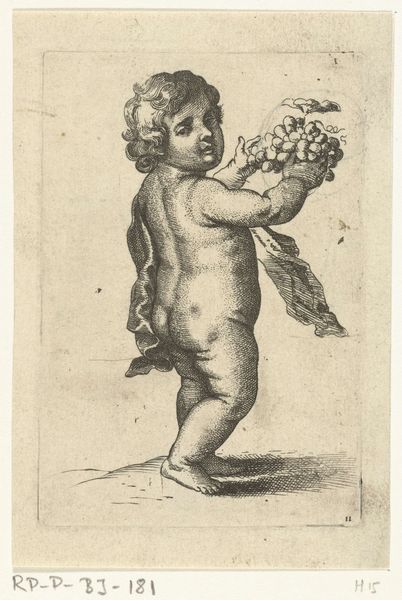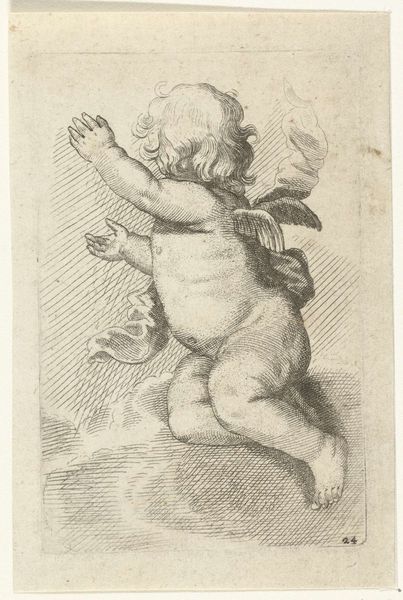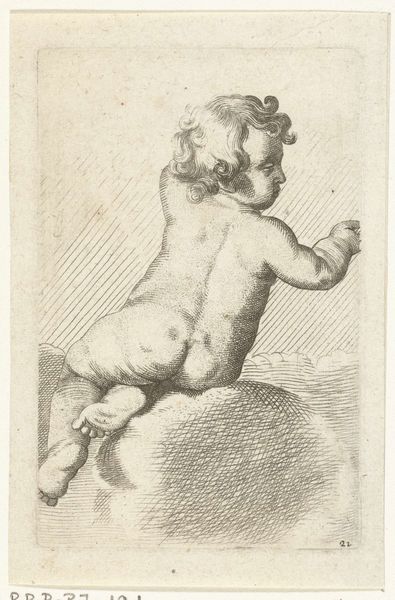
engraving
#
portrait
#
baroque
#
figuration
#
genre-painting
#
engraving
Dimensions: height 103 mm, width 67 mm
Copyright: Rijks Museum: Open Domain
Curator: Standing before us is a captivating engraving by Pieter van Avont, titled "Standing Angel with Crossed Arms," created sometime between 1630 and 1652. Editor: There’s a quiet stillness to this small print. The engraver captured a contemplative mood in what is often a cherubic figure. Curator: It's fascinating to consider the context in which van Avont created this work. Angels were prominent figures in the religious and allegorical art of the Baroque period. It catered to the growing demand for intimate, devotional imagery. Editor: If you look closer, observe how the hatching and cross-hatching meticulously define form and texture, creating a remarkable illusion of three-dimensionality despite its execution in print form. The balance and proportion contribute to the cherub's natural, confident stance. Curator: Yes, the engraver employed considerable technical skill in depicting light and shadow. However, these angels also represent prevailing notions of innocence and divine intervention at a time when societal concerns over salvation were on the rise. The print acted as more than a mere artwork but served a broader societal role in reinforcing belief systems. Editor: But the contrapposto! His weight shifts so slightly to the left, but he maintains his serenity. Even in this small-scale engraving, one notices a palpable sense of anatomical understanding. The curves create an energetic silhouette for a rather pious character. Curator: To that end, its accessibility—made available through the reproductive process—is what cemented its function as a symbol, readily embraced across societal classes at that time. It provided common spiritual and social understanding in an evolving world. Editor: Whether you’re drawn to its intricate form or the artist's skillful manipulation of line, there’s something profound about such close attention paid to a ubiquitous image. Curator: Agreed, looking at the wider role played by images in that era allows a modern audience to glean a deeper awareness of their function at the time.
Comments
No comments
Be the first to comment and join the conversation on the ultimate creative platform.
